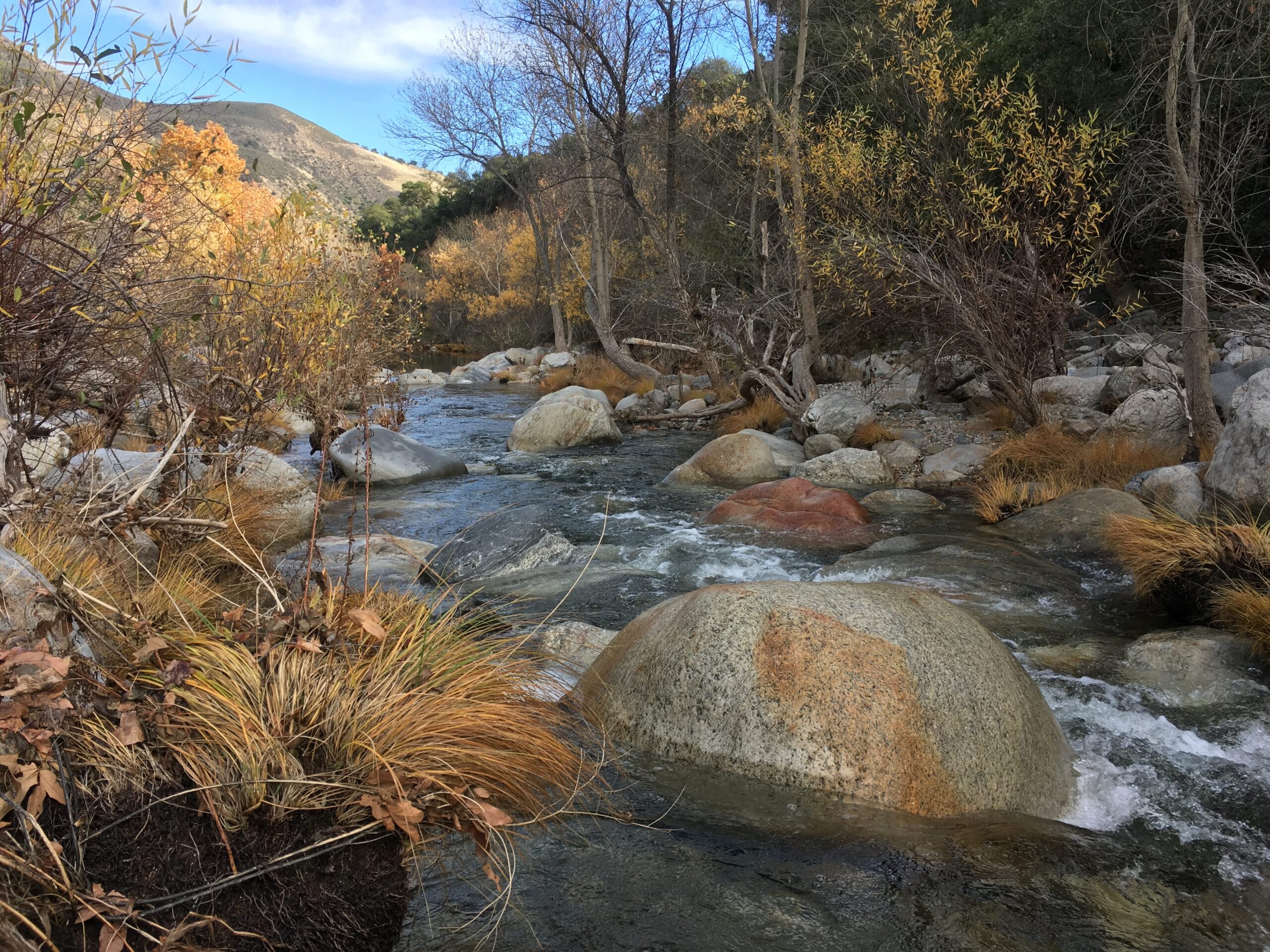The California coastal stream where the author tried to begin again.
By Sam Davidson
The photos didn’t do justice to the fish.
I had been waiting patiently for word from the Steelhead Whisperer, who had spent most of the day on his favorite winter water on the central California coast. But for hours all I heard was crickets.
At length I could stand it no longer and demanded a report.
I knew—I knew—the Whisperer would land the biggest and perhaps only bright steelhead of the day in this tidally influenced water, which had recently opened to the ocean. This certainty derived in equal measure from the Whisperer’s extraordinary skills and fishiness and the fact that I couldn’t join him that day.
When the report came at last it was…laconic.
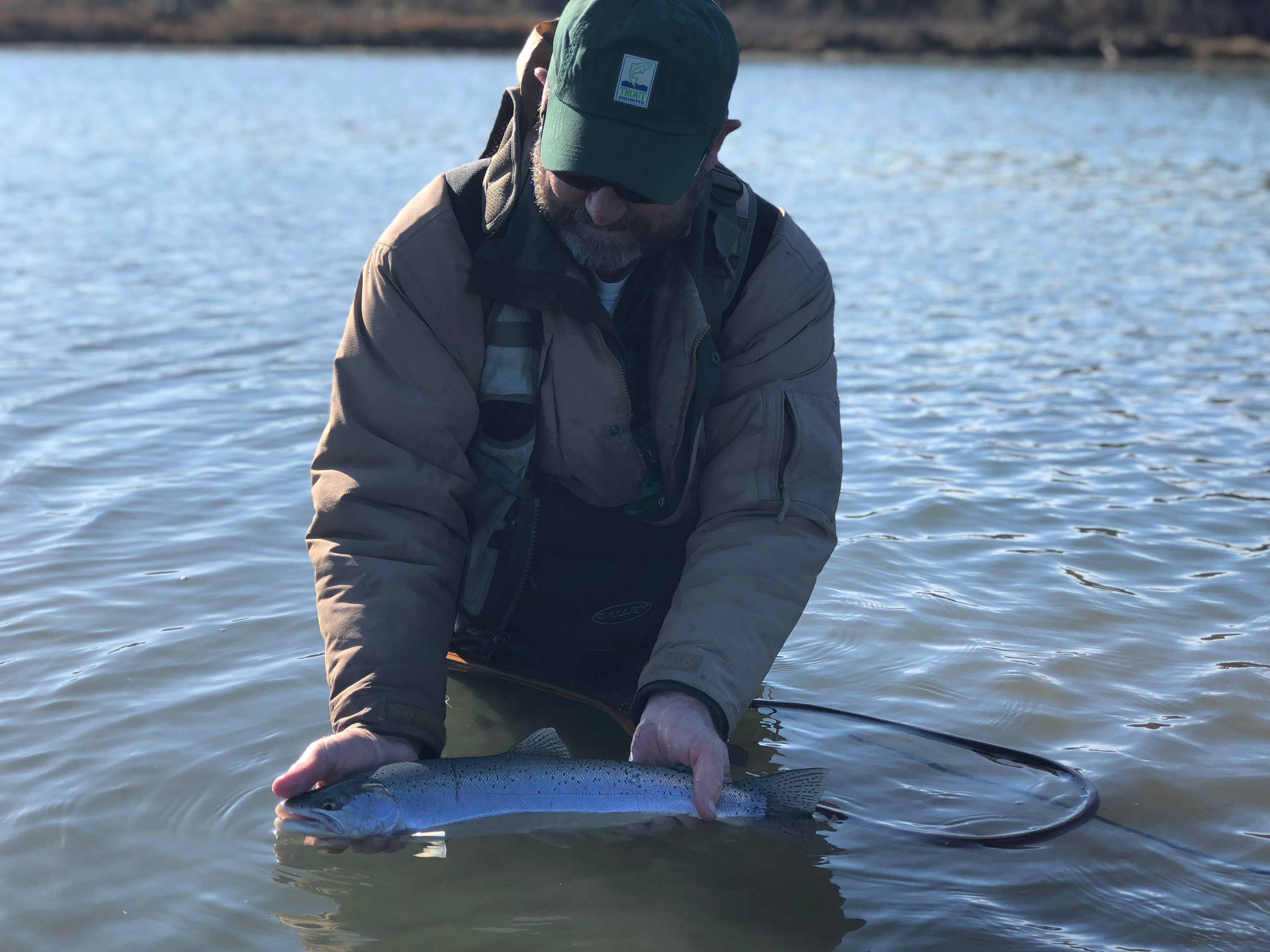 (L) The first of the two photos.
(L) The first of the two photos.
Two photos, with no captions.
In one, the Whisperer is cradling a gorgeous steelhead, recently come in from the salt, a few spots and color starting to show. No Skeena giant, but for this part of the world, a serious
adult steelhead.
The fish is longer than the Whisperer, a fit individual, is wide. But it’s still hard to tell how sizeable it really is.
In the other, the fish is still in his net, the dark profile of the Whisperer poised to ease it out. The net is wide and deep and the fish pretty much fills it.
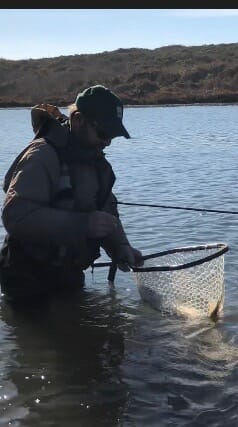 (R) The second photo.
(R) The second photo.
It’s amazing that a fish of that size could come from such a tiny coastal watershed, whose lower reach represents the last, best steelhead fishery south of San Francisco.
Later, the Whisperer modestly offered that he thought the fish may have been seven pounds, and erupted a dozen times from the water as it tore up and down the run.
The steelhead season in these parts is short and highly regulated. You can only fish on Wednesdays, weekends and holidays between December 1 and March 7. In some streams there are minimum flow requirements.
The Steelhead Whisperer’s job, assisted by other Trout Unlimited staff and volunteers, is dedicated to bolstering Central Coast steelhead runs—and to keeping alive the opportunity to fish for them. In multiple coastal watersheds between San Francisco and San Luis Obispo this work, involving cooperative projects with farmers, residential landowners, rural schools and a variety of other partners, is helping to improve fish passage and dry season streamflows in high value wild steelhead watersheds.
I appreciated their efforts, standing waist deep in the Whisperer’s favorite water on opening day of the season, working on my casting form and finding no fish. But after the Whisperer’s report, that appreciation became a jaw-clenched obsession to get back there.
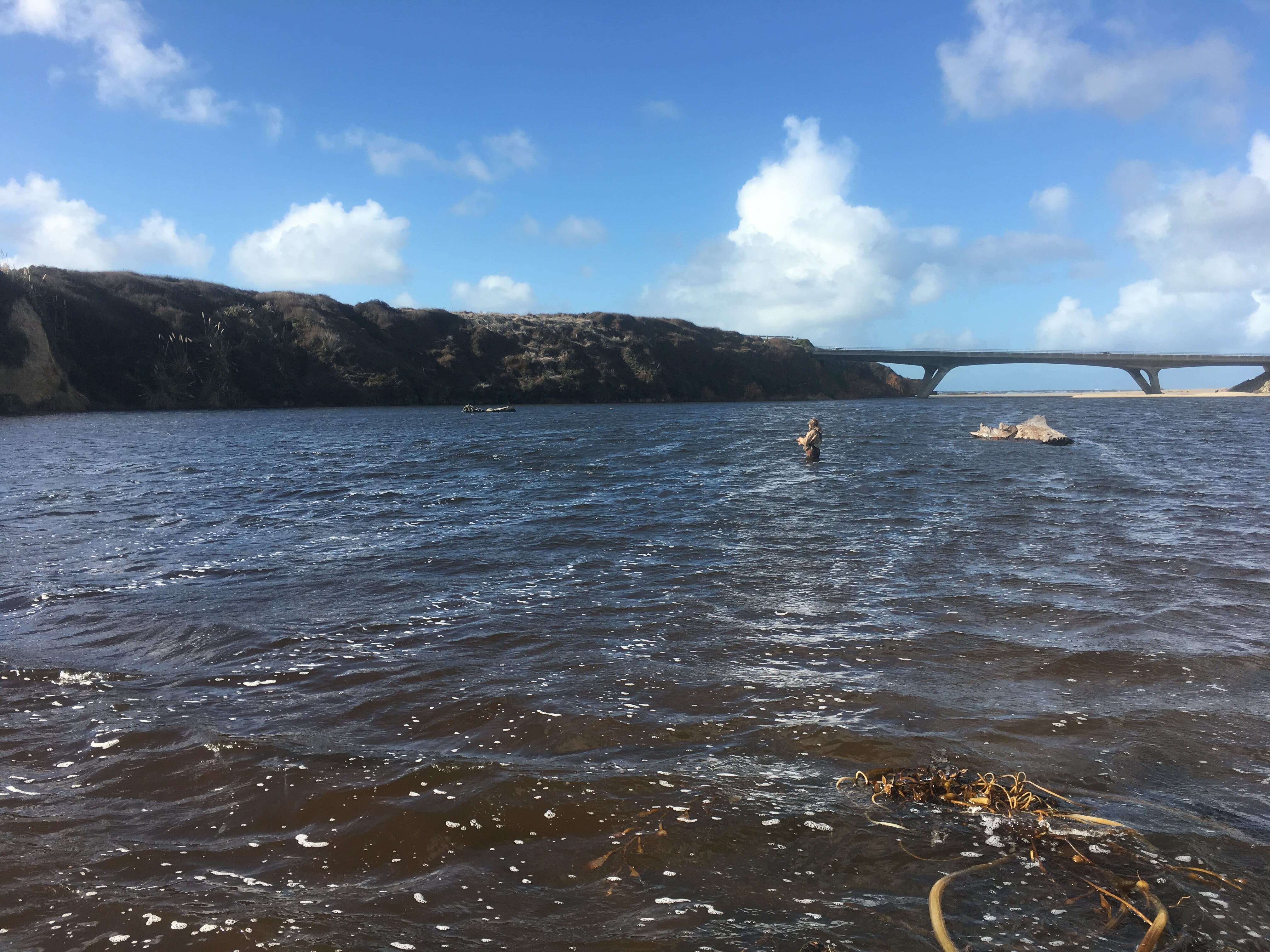 (L) The Steelhead Whisperer, opening day, 2018.
(L) The Steelhead Whisperer, opening day, 2018.
When the weekend finally came, offering the next opportunity to fish in this part of the state, the sand bar at the mouth had re-formed and closed off the stream. There would be no current, and no fresh steelhead would be on patrol there until it opened again.
The very limited steelhead angling opportunities here mean that every open day is precious. What’s a frothing angler to do when conditions don’t cooperate?
In this case, it meant letting go of my aspirations and starting over.
There’s a Latin phrase from Catholic liturgy, Nunc Coepi (pronounced “Noonk Cheppie”), which translates to “Now I begin.” It suggests more than just starting an action. It encourages one to commence each day and each endeavor anew, leaving behind old prejudices, former failures and transgressions, and unfulfilled desires in the process.
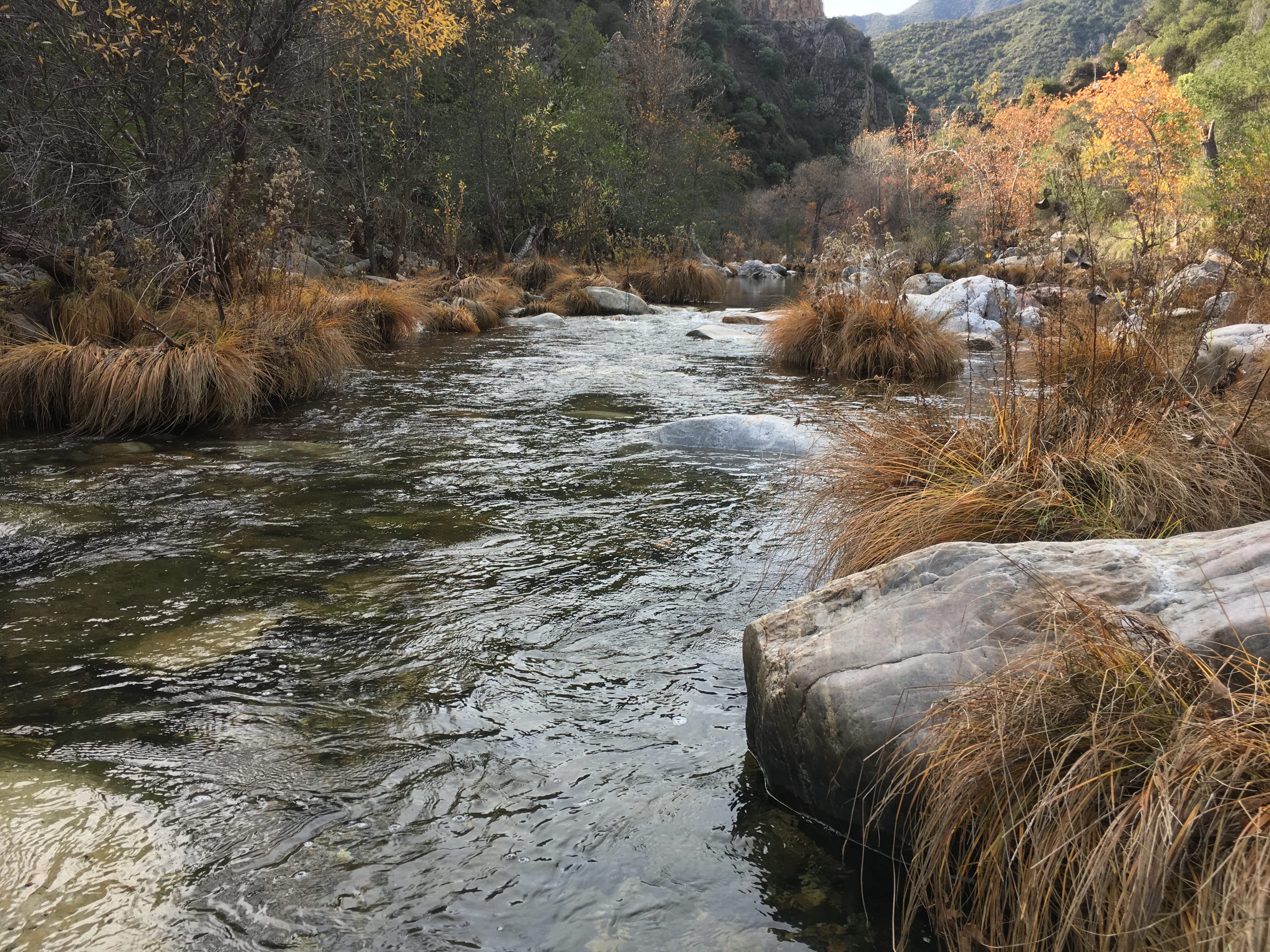 (R) Basically a spring creek in a desert.
(R) Basically a spring creek in a desert.
This concept appeals to me. Especially with respect to fishing, which, for all but the most Whisperer-like among us, regularly serves up healthy doses of disappointment.
On this occasion, with a prized pre-planned fishing day in the balance, I pivoted to a stream where I would be guaranteed not to encounter a steelhead.
A funky section of this stream, in wet years the largest tributary to the Salinas River, is open for fishing during the winter steelhead season.
When this stream does connect to the Salinas, a few steelhead will actually make it up here and find intact, high-quality spawning and rearing habitat in its headwaters. But recent rains, while significant, had not been enough to rewater its lower reach in the Salinas River floodplain.
This stream is basically a spring creek in a desert. And some of its larger pools and pocket water hold massive trout.
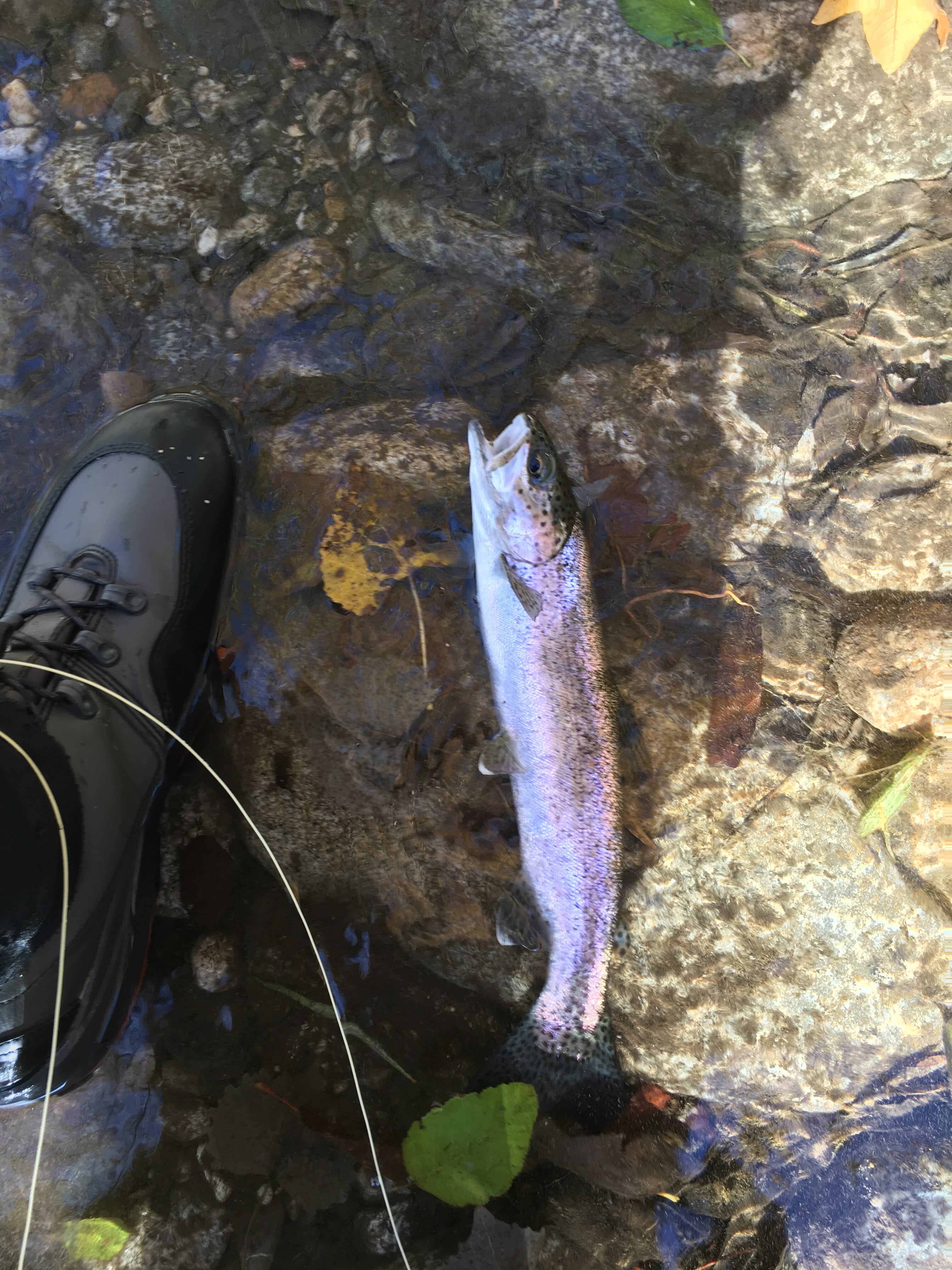 (L) The only, unexpected trout.
(L) The only, unexpected trout.
Much of the section that’s open for fishing in the winter flows through a tight canyon, where cacti hang from ribs of decomposing granite, and is unfishable except at lower flows. I didn’t know what the conditions would be like there, but the sycamores were draped in their ochre glory and the winding drive through the coastal hills is lonely and satisfying, so off I went.
Nunc coepi.
The flow was friendly. An oncoming weather front drew a hazy veil of high cirrus over the sky. A few blue wing olives and caddis bobbed here and there. Three hours of hiking and wading up the canyon, casting dries and nymphs, produced a single trout.
I hadn’t expected to catch anything. The water was low and clear and I spooked no fish anywhere. I had the entire river to myself. The shimmering, foot-long rainbow was a bonus.
By mid-afternoon I’d had enough. A sandwich in the truck was calling. Time to begin the next action, deliberately, letting go of the misses and mistakes clinging like lice to the life I had lived until that moment.
Sam Davidson is TU’s communications director for California and Oregon. He struggles to put Nunc Coepi into practice from his residence near California’s Carmel River, where TU is working with multiple partners to bring back its once-proud wild steelhead run.



